When considering a marketing versus advertising major, you’ll want to identify their key differences. Marketing focuses on market research, consumer behavior, and strategy development while advertising hones in on creative messaging and media planning. If you enjoy analyzing data and understanding customer needs, marketing is likely your path. Conversely, if you’re drawn to crafting compelling visuals and campaigns, advertising fits better. Both fields offer diverse career opportunities, so aligning your choice with your strengths and interests is crucial. Stick around to explore how these majors connect and which one might be the best fit for you.
Understanding the Differences Between Marketing and Advertising Majors

When considering a major in Marketing or Advertising, it’s crucial to understand what each field entails.
A Marketing major typically focuses on market research, product development, and customer engagement, while an Advertising major zeroes in on promoting products through various paid channels.
Knowing these distinctions can help you choose the path that best aligns with your career goals.
What is a Marketing Major?
A marketing major offers a comprehensive understanding of the various facets involved in promoting products and services, emphasizing strategic and analytical skills essential for success in today’s competitive landscape.
As a marketing major, you’ll dive into key areas like market research, where you’ll analyze consumer behavior to identify target audiences and develop effective marketing communications.
You’ll also explore branding strategies, learning how to create and maintain a strong brand identity that resonates with consumers.
Digital marketing is another crucial component of your studies, equipping you with the skills to navigate the ever-evolving online marketplace and implement impactful marketing campaigns.
Throughout your program, you’ll develop both strategic and analytical skills that will serve you well in various roles within business administration.
By understanding the intricacies of consumer behavior and the importance of data-driven decisions, you’ll be prepared to tackle real-world marketing challenges.
Ultimately, a marketing major not only opens the door to diverse career opportunities but also enables you to drive business success through effective marketing strategies.
What is an Advertising Major?
Exploring an advertising major reveals a focus on the creative and persuasive elements vital for capturing consumer attention. In this field, you’ll dive deep into media planning and creative development, learning how to craft compelling messages that resonate with target audiences.
You’ll explore various advertising platforms, ranging from traditional media like print and television to dynamic digital channels such as social media and online ads.
As you gain marketing knowledge, you’ll understand the importance of balancing creativity with strategy, ensuring that your campaigns not only engage but also convert. This major prepares you for a variety of advertising careers, equipping you with skills that marketing and advertising professionals need to excel in a competitive landscape.
You’ll develop a keen awareness of persuasive aspects, honing your ability to persuade and influence consumer behavior effectively. Through projects and internships, you’ll gain hands-on experience, allowing you to apply theoretical concepts in real-world scenarios.
Key Similarities and Differences Between Marketing and Advertising Majors

When comparing marketing and advertising majors, you’ll find both overlap and distinct differences.
Each curriculum offers unique skill sets that prepare you for specific career opportunities in the industry.
Understanding these similarities and differences can help you choose the path that aligns best with your goals.
Curriculum Comparison: Marketing vs. Advertising
Curriculum differences between marketing and advertising majors reveal distinct focuses that cater to varying career paths. If you’re considering these fields, understanding their curriculum can help guide your decision.
Marketing programs often emphasize strategy, research, and consumer behavior. You’ll dive deep into market research methods, develop strategic plans, and analyze consumer trends to inform business decisions. In contrast, advertising majors center on creativity, media, and campaign execution. This focus prepares you to design compelling advertisements and manage campaigns across different platforms.
Here’s a quick comparison of typical coursework:
| Marketing Courses | Advertising Courses |
|---|---|
| Market Research | Media Planning |
| Consumer Behavior | Copywriting |
| Marketing Strategy | Campaign Execution |
| Brand Management | Creative Concept Development |
Skill Sets Developed in Each Major
Students in marketing and advertising majors develop distinct yet overlapping skill sets that prepare them for their respective career paths.
In marketing vs. advertising, analytical skills are crucial for marketing professionals. You’ll learn to interpret data, assess market trends, and devise effective marketing strategies. This analytical foundation is essential for common marketing job titles like market researcher and brand manager.
On the other hand, if you choose advertising vs. marketing, you’ll hone your creative communication skills. You’ll focus on crafting compelling messages and engaging content, vital for advertising roles such as copywriter and creative director. This emphasis on creativity helps you connect with audiences and drive brand awareness.
Both majors require strong communication and active listening skills, making them adaptable in various industries.
While marketing professionals often work behind the scenes to develop strategies, advertising professionals shine in public-facing roles, using creativity to promote products.
By understanding these skill sets, you’ll be better equipped to navigate your career path and excel as a marketing and advertising professional.
Ultimately, the choice between studying marketing or advertising depends on whether you’re drawn more to data analysis or creative expression.
Career Opportunities for Marketing and Advertising Graduates
Career opportunities for marketing and advertising graduates abound across various industries, reflecting their essential roles in driving business success. Both fields offer diverse career paths, with positions like marketing analyst, brand manager, advertising executive, and media planner. These roles are crucial in sectors such as tech, retail, and healthcare, where strategic brand positioning and effective communication are key.
Here’s a quick overview of potential roles:
| Job Title | Description | Average Salary (USD) |
|---|---|---|
| Marketing Analyst | Analyzes market trends to inform strategies | $65,000 |
| Brand Manager | Oversees brand strategy and positioning | $90,000 |
| Advertising Executive | Develops and executes advertising campaigns | $85,000 |
| Media Planner | Plans and buys media space for campaigns | $70,000 |
The job outlook for advertising and marketing professionals is promising, with an expected growth rate of 8% through 2028. Industries where these skills are in demand constantly seek adept individuals to enhance their marketing departments and drive brand success. Exploring these types of jobs and salaries can help you make informed career decisions.
How to Choose Between a Marketing and Advertising Major

When you’re deciding between a marketing and advertising major, start by assessing your personal interests and strengths.
Think about your long-term career goals and how they align with industry trends.
This reflection will help you make a more informed choice that suits your aspirations.
Assessing Your Personal Interests and Strengths
Choosing between a marketing and advertising major is a decision steeped in self-reflection and personal interests. To make the right choice, you need to assess your personal interests and strengths. Consider whether you’re drawn to the strategic analysis that marketing focuses on or the creative expression emphasized in advertising. Understanding the difference between marketing and advertising can guide you in this process.
If you enjoy hands-on experience with data, market research, and the components of marketing, a major in marketing might align better with your career goals. On the other hand, if you thrive in environments where creativity is paramount and prefer roles that lead to advertising jobs, then pursuing advertising programs could be the right fit for you.
Reflect on your strengths: Are you a data-driven thinker or a creative innovator?
Assessing personal interests can significantly influence your academic path and future career. Ultimately, your decision should resonate with what you enjoy doing and what aligns with your long-term aspirations. By evaluating these factors, you’ll be better equipped to choose the major that suits you best.
Long-Term Career Goals and Industry Trends
As you reflect on your strengths and interests, it’s important to consider your long-term career goals and how they align with industry trends in marketing and advertising. The landscape is rapidly evolving due to digital transformation, reshaping roles for marketing and advertising specialists.
A career in advertising now often emphasizes online advertising, leveraging data analytics and social media platforms to reach target audiences effectively.
According to projections, job opportunities for marketing managers will grow by 8% through 2028, driven by the increasing need for businesses to adapt to digital environments. This expansion highlights the importance of obtaining advertising and marketing degrees that prepare students for future demands.
You’ll need to harness market insights to determine trends and consumer behavior, allowing you to craft effective strategies.
Ultimately, aligning your long-term career goals with these shifting industry trends will position you for success. Whether you choose a focus on marketing or advertising, staying informed and adaptable will be key to thriving in an ever-changing marketplace.
Embrace the opportunities that digital transformation presents, and you’ll be well-equipped for a rewarding career.
The Interconnectedness of Marketing and Advertising

Advertising plays a crucial role in your marketing strategy, bridging the gap between your brand and its audience.
By understanding the distinction between advertising and publicity, you can leverage both to create a comprehensive approach that resonates with your target market.
By examining successful case studies, you can see how effectively integrating marketing and advertising tactics enhances overall impact.
Understanding this interconnectedness will help you make more informed decisions in your studies and future career.
The Role of Advertising in a Marketing Strategy
How can you effectively drive your business goals forward? By recognizing that advertising is a component of a broader marketing strategy.
In the marketing and advertising world, integrating advertising efforts with your overall marketing goals is crucial. This means aligning your advertising campaigns—whether through traditional advertising or digital media—with the common marketing tactics you employ to reach your target audiences.
The importance of advertising lies in its ability to create awareness and generate demand for your products or services. When you identify target audiences and tailor your advertising messages to resonate with them, you enhance the effectiveness of your marketing strategy.
For instance, a well-executed digital media campaign can complement offline efforts, reinforcing brand messaging across multiple channels.
To achieve your business objectives, ensure that your advertising initiatives reflect your broader marketing strategy. This cohesive approach not only promotes your offerings but also fosters brand loyalty and drives sales.
Case Studies: Successful Integration of Marketing and Advertising
Successful marketing campaigns often blend both marketing and advertising strategies to achieve outstanding results. A great example is Nike’s “Just Do It” campaign, which combines emotional storytelling with direct brand promotion. By appealing to consumers’ aspirations, Nike effectively integrated its marketing efforts with compelling ads, resulting in increased brand loyalty and sales.
Here are some key elements that contributed to the campaign’s success:
- Integrated Marketing: The campaign utilized various channels—TV, social media, and print ads—to reach diverse audiences.
- Emotional Connection: It resonated with consumers through relatable stories, encouraging them to overcome challenges.
- Clear Messaging: The slogan encapsulated the brand’s ethos, making it memorable and impactful.
- Consistent Branding: Nike maintained a strong, cohesive brand identity across all platforms.
These real-world examples highlight that successful marketing campaigns rely on a combination of effective advertising and strategic marketing. The lessons learned emphasize the importance of storytelling, emotional resonance, and consistent messaging in driving brand promotion and consumer engagement.
Making the Right Choice for Your Future

Choosing between a marketing or advertising major can shape your career path significantly.
Think about your interests and strengths, as each field offers unique opportunities and challenges.
Marketing focuses on understanding customer needs and preferences, while advertising emphasizes creative messaging and visual appeal.
Key Takeaways
When it comes to your future, understanding the distinctions between marketing and advertising is crucial for making an informed decision. Both fields offer unique paths that can significantly align with your career goals, so it’s essential to weigh your interests against the skill sets required.
Here are some key takeaways to consider:
- Marketing involves market research, product development, and brand management, while advertising focuses on promoting a product through paid channels.
- A degree in marketing or advertising can lead to various types of jobs in both sectors, including roles such as brand manager or advertising specialist.
- The importance of aligning your studies with your career aspirations can’t be overstated. Choose a program that matches your interests, whether you’re drawn to the strategic side of marketing or the creative aspect of advertising.
- Consider your long-term goals; working in marketing may offer broader opportunities, while advertising can provide a more focused approach to promoting a product.
Conclusion
In conclusion, choosing between a marketing and advertising major can set the course for your future. Both fields offer unique opportunities, but understanding their differences is crucial. Consider your interests and strengths—whether you lean towards the broader strategies of marketing or the creative aspects of advertising. Remember, these disciplines are interconnected, and your choice should align with your career aspirations. Whichever path you pick, you’re on the brink of an exciting and rewarding journey!


